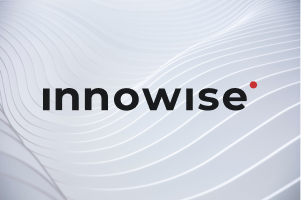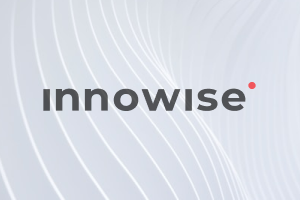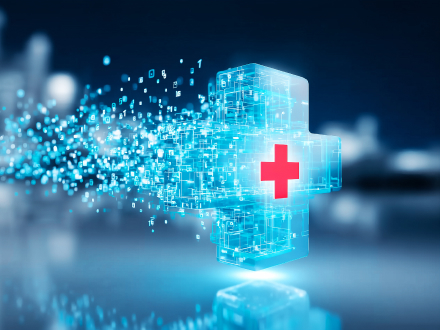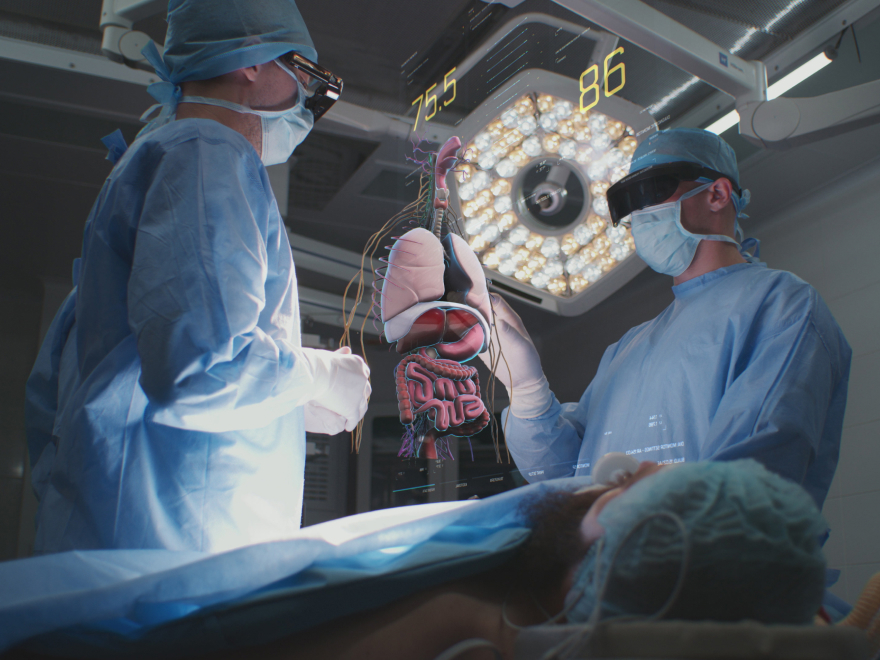A sua mensagem foi enviada.
Processaremos o seu pedido e contactá-lo-emos logo que possível.
O formulário foi enviado com sucesso.
Encontrará mais informações na sua caixa de correio.

Selecionar a língua


O mapeamento de dados na área da saúde é um processo de correspondência de campos entre bases de dados de diferentes sistemas de informação. Por outras palavras, o mapeamento de dados dá sentido a cada ligação e cria um projeto pormenorizado para todos os dados de cuidados de saúde num ecossistema informático.
Os dados relativos aos cuidados de saúde provêm de várias fontes, como EMRs ou EHRs, CRMs médicos dispositivos portáteis, sistemas de imagiologia médica e sistemas de faturação. Cada uma destas fontes utiliza diferentes normas de intercâmbio de dados e de terminologia, o que pode naturalmente complicar as coisas. Por exemplo, um sistema de radiologia pode utilizar DICOM e o EHR pode utilizar HL7, ou diferentes hospitais podem codificar procedimentos utilizando sistemas diferentes, como CPT e SNOMED CT. Estas variações dificultam a integração e a interpretação dos dados médicos.
Ao utilizar o mapeamento de dados como parte do seu desenvolvimento de software para cuidados de saúde os prestadores podem facilmente ligar dados semelhantes e transformá-los numa norma unificada. Como resultado, as empresas do sector da saúde podem ultrapassar a fragmentação comum aos sistemas de dados no sector e utilizar eficazmente os dados para os cuidados dos doentes.
Obtenha mais controlo do ecossistema de TI dos cuidados de saúde com o mapeamento de dados
O mapeamento de dados faz normalmente parte do processo de migração de dados em projectos de maior dimensão. Nos cuidados de saúde, é aplicado em várias áreas, mas existem alguns cenários comuns.
Migração de dados refere-se a transferência de dados de um sistema para outroA migração de dados é frequentemente efectuada quando se muda para um novo sistema, quando se actualiza um sistema existente, quando se muda para a nuvem ou quando se passa por uma transformação digital. Durante a migração, o mapeamento de dados estabelece ligações entre campos de dados em diferentes sistemas de TI, permite uma transferência sem erros e ajuda a manter a consistência dos dados entre soluções.

Integração de dados combina dados de diferentes fontes num único localque é uma necessidade absoluta para os prestadores de cuidados de saúde que recolhem dados operacionais e relacionados com os cuidados de saúde de vários sistemas. O mapeamento de dados é um passo natural durante a integração, uma vez que faz a ponte entre os sistemas que utilizam os mesmos dados e garante a sua consistência e exatidão.

Os prestadores de cuidados de saúde precisam frequentemente de converter dados de um formato para outroA empresa pode, por exemplo, integrar vários sistemas ou tornar os dados mais fáceis de utilizar e analisar. Com o mapeamento de dados de cuidados de saúde, podem compreender as ligações entre os dados nas bases de dados, independentemente da forma como a informação é armazenada, e depois proceder à transformação num formato unificado.

Ao implementar o business intelligence nos cuidados de saúde, o mapeamento de dados ajuda a garantir que os dados de várias fontes se alinham corretamente para a análise. Ao ligar diferentes fontes de dados, simplifica a extração, limpeza e preparação de dados. Desta forma, as ferramentas de BI acedem a dados prontos para análise e fornecem informações mais precisas e acionáveis.

Muitas soluções de elaboração de relatórios utilizam terminologia e estruturas de dados únicas, pelo que as empresas do sector médico têm de ajustar os seus dados. Aproveitando o mapeamento de dados, os prestadores de cuidados de saúde sincronizar os seus dados com a terminologia e a estrutura dos relatórios. Ajuda a definir os dados necessários para relatórios e registos específicos e simplifica este processo.

Intercâmbio eletrónico de dados (EDI) automatiza o intercâmbio de documentos entre empresas do sector da saúde - como hospitais e companhias de seguros - optimizando os fluxos de trabalho e a gestão de registos. Neste caso, o mapeamento de dados especifica os dados utilizados nos documentos, onde estão localizados e como devem ser transformados para corresponder à estrutura de dados exigida pelo software de destino.

Migração de dados refere-se a transferência de dados de um sistema para outroA migração de dados é frequentemente efectuada quando se muda para um novo sistema, quando se actualiza um sistema existente, quando se muda para a nuvem ou quando se passa por uma transformação digital. Durante a migração, o mapeamento de dados estabelece ligações entre campos de dados em diferentes sistemas de TI, permite uma transferência sem erros e ajuda a manter a consistência dos dados entre soluções.

Integração de dados combina dados de diferentes fontes num único localque é uma necessidade absoluta para os prestadores de cuidados de saúde que recolhem dados operacionais e relacionados com os cuidados de saúde de vários sistemas. O mapeamento de dados é um passo natural durante a integração, uma vez que faz a ponte entre os sistemas que utilizam os mesmos dados e garante a sua consistência e exatidão.

Os prestadores de cuidados de saúde precisam frequentemente de converter dados de um formato para outroA empresa pode, por exemplo, integrar vários sistemas ou tornar os dados mais fáceis de utilizar e analisar. Com o mapeamento de dados de cuidados de saúde, podem compreender as ligações entre os dados nas bases de dados, independentemente da forma como a informação é armazenada, e depois proceder à transformação num formato unificado.

Ao implementar o business intelligence nos cuidados de saúde, o mapeamento de dados ajuda a garantir que os dados de várias fontes se alinham corretamente para a análise. Ao ligar diferentes fontes de dados, simplifica a extração, limpeza e preparação de dados. Desta forma, as ferramentas de BI acedem a dados prontos para análise e fornecem informações mais precisas e acionáveis.

Muitas soluções de elaboração de relatórios utilizam terminologia e estruturas de dados únicas, pelo que as empresas do sector médico têm de ajustar os seus dados. Aproveitando o mapeamento de dados, os prestadores de cuidados de saúde sincronizar os seus dados com a terminologia e a estrutura dos relatórios. Ajuda a definir os dados necessários para relatórios e registos específicos e simplifica este processo.

Intercâmbio eletrónico de dados (EDI) automatiza o intercâmbio de documentos entre empresas do sector da saúde - como hospitais e companhias de seguros - optimizando os fluxos de trabalho e a gestão de registos. Neste caso, o mapeamento de dados especifica os dados utilizados nos documentos, onde estão localizados e como devem ser transformados para corresponder à estrutura de dados exigida pelo software de destino.

Dados de má qualidade custa às organizações uma média de $12,9 milhões por ano de acordo com a Gartner. E os problemas com os dados acumulam-se, conduzindo a ecossistemas de dados emaranhados e a imprecisões que influenciam a tomada de decisões. O mapeamento de dados pode ajudar a resolver muitos desses problemas e trazer os seguintes benefícios.
Como a cartografia de dados é essencial para a interoperabilidade, ajuda os profissionais de saúde a aceder a toda a informação sobre os cuidados de saúde, mesmo que esteja dispersa por diferentes sistemas. Poupa-lhes tempo na pesquisa de dados, melhora a coordenação dos cuidados e diminui os encargos administrativos.
Ao fazer corresponder dados de diferentes fontes, os prestadores de cuidados de saúde obtêm uma melhor compreensão do perfil de saúde de um doente, incluindo alergias, medicamentos e tratamentos anteriores. Isto resulta em encaminhamentos mais rápidos, minimização de atrasos e melhores resultados para os pacientes.
A introdução manual de dados é comum nos cuidados de saúde e conduz frequentemente a erros, duplicados ou problemas de faturação. A cartografia de dados pode ajudar na transferência de registos entre diferentes sistemas, aliviando a carga de trabalho do pessoal médico. Os estudos demonstram que funciona: 30% dos fornecedores afirmam que as plataformas de dados agregados os ajudaram a poupar custos e gerir melhor a sua força de trabalho.
Com um mapeamento de dados adequado, as organizações de cuidados de saúde podem garantir que os registos são estruturados de forma consistente e geridos em conformidade com os quadros regulamentares, como a HIPAA e o GDPR. Ao organizar e consolidar os dados numa única plataforma, as organizações podem garantir a exatidão dos dados e manter mais facilmente os requisitos de segurança das informações de saúde protegidas.
Ao adotar o mapeamento de dados, as organizações de cuidados de saúde podem realizar uma análise abrangente dos dados e identificar áreas para otimização de recursos. Estas informações ajudam a afetar o pessoal e o equipamento de forma mais eficiente, a melhorar o desempenho do pessoal e a maximizar a utilização dos recursos.
Os investigadores podem utilizar a cartografia de dados para criar conjuntos de dados abrangentes e realizar ensaios clínicos e estudos de investigação em grande escala. Isto permite-lhes identificar tendências nos padrões das doenças, prever as necessidades de recursos e desenvolver estratégias de cuidados de saúde mais eficazes.
"Na minha experiência, os prestadores de cuidados de saúde com ecossistemas de dados complexos precisam absolutamente de um mapeamento de dados robusto, especialmente quando estão a passar por uma transformação digital. Vi em primeira mão como é essencial simplificar o fluxo de dados em vários sistemas para garantir precisão e consistência. A minha equipa e eu temos um profundo conhecimento dos processos de cuidados de saúde e podemos ajudar a sua empresa a mapear os dados de cuidados de saúde, lançando as bases para projectos de TI mais complexos e inovadores."

Aleh Yafimau
Gestor de entregas
O software EHR da Epic é utilizado por mais de 305 milhões de utilizadores em todo o mundo. O mapeamento de dados está no centro da troca de dados sem falhas. Esta tecnologia permite que os prestadores de cuidados de saúde troquem informações sem esforço e prestem cuidados melhorados e personalizados.
A Merative, anteriormente conhecida como IBM Watson Health, aplica o mapeamento de dados para integrar dados de pacientes em instituições para uma investigação mais aprofundada. Também garante a exatidão e a normalização dos dados para uma análise de IA precisa, conduzindo a melhores decisões de cuidados de saúde.
A plataforma HealthShare da InterSystems gere mais de mil milhões de registos médicos em todo o mundo e resolve o problema dos silos de dados nos cuidados de saúde. Ao utilizar o mapeamento de dados, o HealthShare integra e agrega facilmente as informações dos pacientes de várias fontes, como registos médicos electrónicos e sistemas de imagiologia.
A Redox é especializada na integração de dados de cuidados de saúde, ligando organizações, aplicações e fontes de dados. Aproveita o mapeamento de dados para otimizar o intercâmbio de dados e garantir o acesso e o intercâmbio seguros de dados dos pacientes. Além disso, a Redox facilita o intercâmbio de dados bidireccionais em tempo real em vários ambientes e permite a transformação de normas de dados antigos.
O mapeamento de dados é crucial para gerir a vasta quantidade de dados de cuidados de saúde gerados. Com o mapeamento de dados, os prestadores de cuidados de saúde podem prestar cuidados mais informados, reduzir os erros e os custos operacionais e personalizar os planos de tratamento.
No entanto, uma implementação bem sucedida requer um planeamento cuidadoso e experiência. A nossa equipa de especialistas pode ajudá-lo a navegar pelas complexidades do processo e garantir uma transição perfeita. Se estiver interessado em saber mais sobre o mapeamento de dados, os seus potenciais benefícios para a sua empresa e a forma como o podemos ajudar a tirar partido dele para uma mudança positiva, não hesite em entrar em contacto connosco.
Em suma, o mapeamento de dados nos cuidados de saúde consiste em ligar campos entre bases de dados de sistemas. O mapeamento é uma etapa essencial da migração e integração de dados e é utilizado para trocar informações entre dois ou mais sistemas, como EMR, EHR ou aplicações para pacientes. Além disso, permite a análise baseada em conjuntos de dados, a análise preditiva, os testes de medicação, a investigação de doentes e muito mais.
A cartografia de dados simplifica a agregação de informações de várias fontes, facilitando a coordenação dos cuidados entre os profissionais de saúde e simplificando a tomada de decisões clínicas. Quando não há necessidade de introdução manual de dados em vários sistemas, há menos riscos de perda de dados, erros médicos, registos em falta e duplicados, e problemas de segurança e conformidade.
O mapeamento de dados de cuidados de saúde, quando efectuado corretamente, não compromete a segurança e a conformidade regulamentar. Para tal, é necessário encriptar os dados utilizando algoritmos robustos e armazená-los num ambiente protegido, com acesso restrito apenas a pessoal autorizado. Para cumprir os regulamentos de privacidade como a HIPAA e o RGPD, as empresas de cuidados de saúde que pretendam implementar o mapeamento de dados necessitam de medidas de proteção adicionais, como auditorias regulares e formação do pessoal sobre as melhores práticas de segurança dos dados.














A sua mensagem foi enviada.
Processaremos o seu pedido e contactá-lo-emos logo que possível.

Ao inscrever-se, o utilizador concorda com a nossa Política de privacidadeincluindo a utilização de cookies e a transferência das suas informações pessoais.